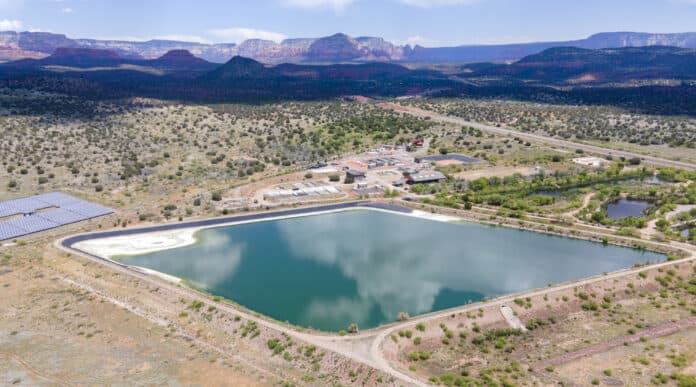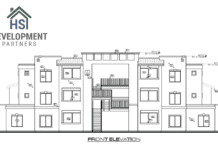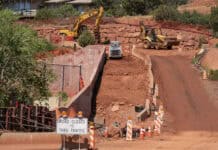
The Sedona City Council voted unanimously on Aug. 13 to move forward with increasing wastewater fees.
The council followed the fee increase with a hearing on also increasing development impact fees to more than double their current levels.
During the fiscal year 2025 budget planning process, council directed staff to increase wastewater rates by 3.6%, equivalent to the change in the consumer price index over the previous year, as an interim measure pending completion of a wastewater rate study next year by what accounting manager Renee Stanley referred to as “subject matter experts.” Wastewater Director Roxanne Holland referred to the increase as a “proactive step.”
The city of Sedona’s Wastewater Treatment Plant, located 10 miles outside city limits, has cost the city more than $300 million over its lifespan. Stanley informed the council that sales tax subsidies to the sewage plant totaled $136 million through 2023. These subsidies are currently planned to end in 2026, with the wastewater fund intended to become self-sustaining.
Councilwoman Kathy Kinsella asked whether the 3.6% increase would close the gap between funding and expenses for the system.
“We haven’t prepared those projections yet,” Stanley said. “I don’t think it’s going to close the gap … it’s a minimal increase.”
Public comment was uniformly opposed to the proposed rate hike.
“Thunder Mountain Ranch owns and maintains approximately two miles of low-flow sewer infrastructure,” Thunder Mountain Homeowners’ Association president Donna Foreman said. “Our residents are burdened twice, first by maintaining and paying for our own sewer collection system, and then by paying again for a wastewater sewer collection system from which they receive minimal benefit.” She asked the council to defer any rate increase “until the service differentials can be resolved.”
“There’s a terrific misunderstanding about what comprises a rate,” said Kate Malden, who identified herself as a former chairwoman of the Alaska Public Utilities Commission. “You will not come to a private utility system and offer the same level of service … that’s the essential difference here between a private system and a fully-supported system … The service levels are different.”
“It is essential that the council acknowledge that the wastewater provides differing levels of service among its customers,” Glen Mann said. “There are several private sewer collection systems operating in Sedona and we want to know if they are also being overcharged. “Rates should be based on the actual cost of services provided. Nothing more, nothing less.”
“Since my [office condominium] unit was built in 1983, it has never had any water service,” attorney Ronald Rovey said. However, because his office is a condominium, “each unit has an assessor’s parcel number, so the city levies a monthly sewer assessment against each unit … even though my office unit has no water service, contributes not one drop of water to the city sewer system and never will. That is effectively an unconstitutional tax … It is patently unfair and unreasonable. For the city to collect assessments, the city must provide some services or benefits.”
Deputy City Manager Andy Dickey confirmed that Rovey’s situation was not an isolated case.
“I can tell you there are other examples out there,” Dickey said.
While stating that the city does not service private sewer lines, “it’s less than 1% of our entire system that they’re responsible for,” Holland said.
Dickey said that the quality of some of the city’s less expensive, low-pressure private sewer systems is insufficiently high to warrant the city taking over responsibility for those lines.
“If you look at the Chapel [area], the Chapel is 10 miles further away — I’m making up a number — than where I live,” Vice Mayor Holli Ploog said. “I live closer to the Wastewater Treatment Plant than the Chapel, so should they pay more because the waste is going further?”
“You just made the first argument I’ve ever heard for why somebody should want to live next to a sewer plant,” Councilman Brian Fultz said.
“We need to do this,” Fultz added. “There’s going to be more increase coming.”
Councilwoman Melissa Dunn called the proposed increase “necessary but not sufficient.” Councilman Pete Furman described it as a “band-aid.”
“I don’t think people should be under any illusion that they’re not going to end up paying probably some amount more than they think is reasonable,” outgoing Councilwoman Jessica Williamson said




















